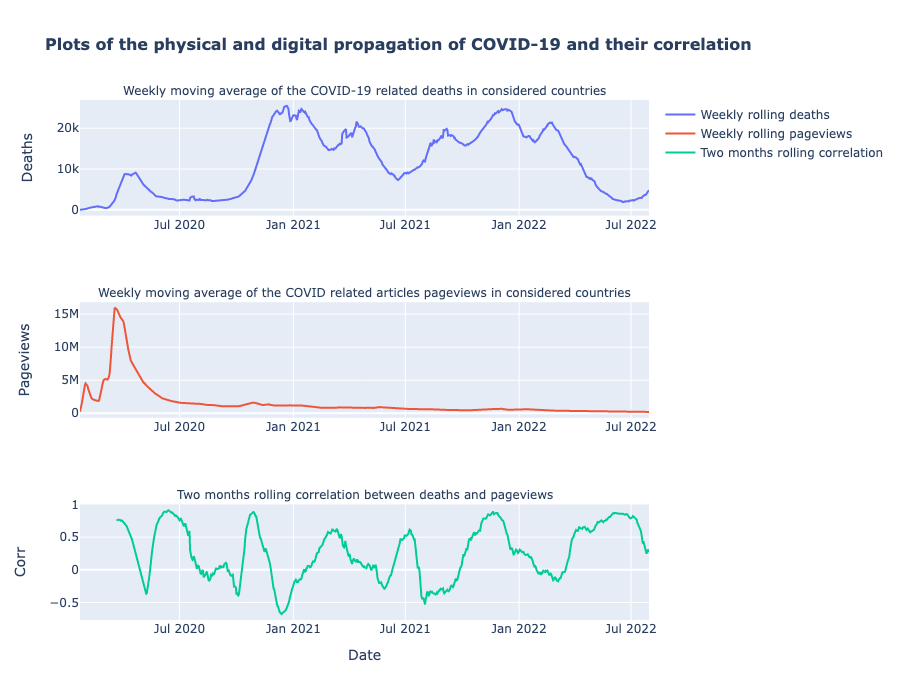Exploring the data
Now that we have a sense of the evolution of the pandemic and the digital propagation over the last two years, let's go deeper in the analysis by studying the evolution of the regression by windows of 60 day that relates these two dataset by country. For that, we fit a linear regression on the cumulative wikipedia pageviews and the cumulative deaths per country adding an intercept, and we plot the evolution of the fitted line through the time.
Looking at this Figure, one notice that the slope of the line decreases with the time. It passes from 81.01% (p-value: 0.03) to 5.52% (p-value: 0.67). These values show that the earlier in the pandemic we were, the higher was the relation between COVID-19 deaths and wikipedia pageviews. However, with the arrival of the new waves, it decreases and the p-value of 0.67 shows even that we cannot reject the "no slope" hypothesis the middle of 2021. It is possible that as people have become more familiar with COVID-19 and the measures taken to control its spread, their interest in reading about the topic has decreased. Additionally, it could be that the impact of COVID-19 on people's daily lives has decreased over time, leading to a decrease in their interest in reading about it.
Another point shown on the animated plot is the evolution of the position of each country related to the regression line. Some stay above it all the time such as Germany, others stay below such as Bangladesh and most of them varied their position such as Thaïland. Interestingly, their interest in COVID-19 does not increase even when they have a strong increase in death rates.
Overall, this plot highlights the interest or even the fear of the population towards COVID-19. In fact, the first group (above the line) will search more information on the COVID-19 than the mean for a fixed number of deaths. On the other hand, the second group (below the line) has less interest in this disease. Finally, the last group changes depending on the different waves in their countries.
Finally, we notice an increase of the slope of the regression line at the end of 2021 which coincides with the arrival of the Omicron variant and the third dose of vaccine in Europe.
To continue in this optic, we plot the moving average of the overall deaths and pageviews. Is the correlation between these two time series higher with the arrival of new waves in the pandemic?

We can clearly recognize the 6 COVID waves we have had so far when looking at the peaks of death and, maybe more impressive, we have a strong visualization of how sudden and impactful the COVID-pandemic was. Pageviews skyrocketed for a brief period and reached record heights never to be seen again.
We also plotted the correlation between the two time series, and we can confirm that there is always a renewed interest for COVID for each new wave. Often, the correlation is highest just before the deaths are highest.
Now that we have observed a relation between digital and physical propagation, let’s analyze how the pandemic impacts mobility differentiating each population with the trust they have in their government.